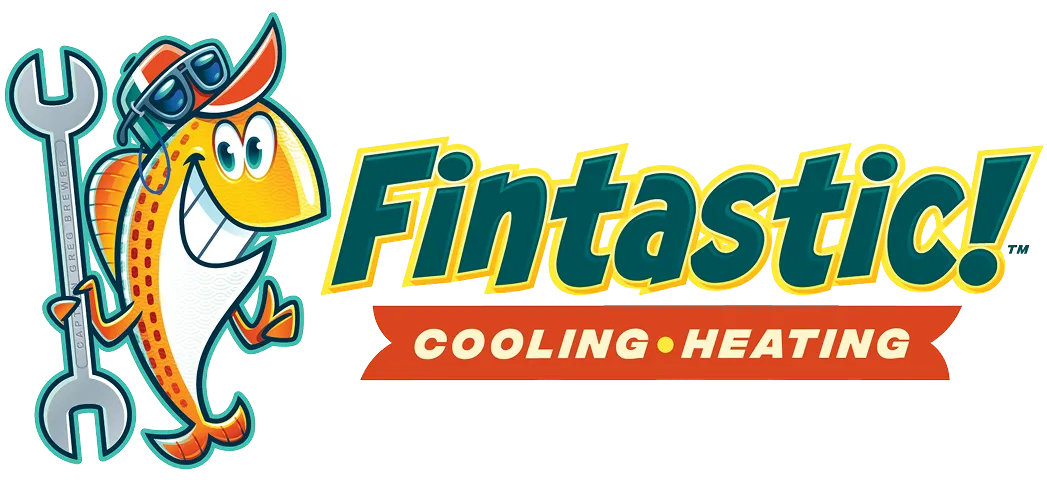Essential HVAC Maintenance Tips for Homeowners
Essential HVAC Maintenance Tips for Homeowners: Your Complete Guide to Efficient Heating and Cooling
Keeping your heating and cooling systems in top shape with regular HVAC maintenance means fewer surprise breakdowns, consistent indoor comfort all year, and peak efficiency. This guide is packed with practical HVAC maintenance tips for homeowners, covering everything from AC tune-ups and furnace care to seasonal checklists specifically for Houston's climate. We'll also walk you through DIY safety steps to help you reduce risks while boosting performance. Many Houston homes deal with heavy cooling demands, high humidity, and pesky pollen, all of which can accelerate wear on your condensers, coils, filters, and ductwork. That's why proactive, targeted care makes a real difference. You'll learn why maintenance is so important, get an essential homeowner checklist, discover safe DIY tasks and know when to call in the pros, find out what to do in spring and fall for Houston's weather, and explore strategies for better indoor air quality and furnace safety. Plus, we'll show you how a professional HVAC Maintenance Plan can save you money, extend your system's life, and get you priority scheduling when you need it most. Throughout this guide, you'll find handy lists, clear how-to steps, and three helpful tables to make acting on these HVAC maintenance tips a breeze and keep your system running dependably.
Why Is Regular HVAC Maintenance Crucial for Homeowners?
Think of regular HVAC maintenance as essential preventive care for your system. It helps extend its lifespan, boosts energy efficiency, and keeps your indoor air healthy by clearing out dirt, ensuring proper refrigerant levels, and confirming safe operation. When you perform routine checks and scheduled servicing, you reduce the strain on components like blower motors, condensers, and heat exchangers. This directly lowers the chance of major failures and helps your equipment last longer. Routine maintenance also restores your system to its original efficiency—clean coils and the right amount of refrigerant allow the system to move air and heat as designed—leading to lower utility bills and more consistent comfort. Understanding these core benefits makes it clear why scheduling seasonal tune-ups and tackling small issues early is key to avoiding costly emergency repairs and ensuring reliable comfort, especially during Houston’s demanding cooling or heating seasons.
The main advantages homeowners gain from consistent HVAC attention are a longer system lifespan, energy savings, better indoor air quality, and fewer breakdowns. These benefits happen because cleaning, calibration, and safety checks reduce friction, improve airflow, and catch hidden problems before they snowball into bigger issues. The next section gives you a straightforward, actionable checklist so you can focus on the tasks that deliver the biggest impact.
Here are the key benefits homeowners enjoy from regular HVAC care:
- Extend your system’s life by reducing wear and tear on components through cleaning and lubrication.
- Save energy and lower your bills by restoring your equipment to peak efficiency.
- Breathe easier with improved indoor air quality thanks to regular filter changes and contaminant removal.
- Minimize unexpected breakdowns, especially when your system is working hardest during peak seasons.
Regular maintenance offers a cascade of overlapping benefits that reinforce each other; for instance, cleaner coils boost both energy use and air quality, which in turn helps prevent component failure and reduces how often you need repairs.
How Does HVAC Maintenance Extend Your System’s Lifespan?
HVAC maintenance helps your system live longer by removing buildup, ensuring proper lubrication, and correcting operating conditions that can prematurely wear out parts like compressors, motors, and fans. Cleaning your evaporator and condenser coils restores their ability to transfer heat efficiently, preventing compressors from overheating and cycling too frequently—two major culprits behind early system failure. Regular inspections can spot early signs of refrigerant leaks, electrical wear, or failing bearings, allowing technicians or homeowners to address issues before they lead to more significant problems. This proactive approach cuts down on the need for major component replacements and helps your system reach or even surpass its expected operational lifespan.
Extending your system’s life hinges on targeted actions like replacing filters and checking refrigerant levels at the recommended times. These tasks naturally lead into the detailed homeowner checklist we provide and help you decide when professional annual tune-ups are in order.
What Energy Savings Can You Expect from Proper HVAC Care?
Taking good care of your HVAC system leads to noticeable energy savings by bringing your equipment back to its designed efficiency. This is achieved through cleaning coils, ensuring the correct refrigerant charge, and calibrating thermostats to avoid unnecessary runtime. Recent industry data suggests that corrective maintenance can improve efficiency by about 10–20%, though the exact savings will vary based on your equipment's age, your local climate, and your household's habits. For homeowners, these percentage improvements translate directly into lower utility bills, especially during Houston’s long cooling season, and reduced peak demand on hot days. The energy savings add up over time as fewer breakdowns and better performance mean your system doesn't have to run longer or harder to keep you comfortable.
Understanding these potential savings helps you prioritize maintenance tasks that offer the most value, which naturally leads into how cleanliness and filtration also contribute to both efficiency and your family's health.
How Does HVAC Maintenance Improve Indoor Air Quality?

HVAC maintenance plays a key role in improving indoor air quality (IAQ) by ensuring air filters are changed, ductwork and coils are cleaned, and humidity is managed. These actions help reduce the amount of dust, allergens, and mold spores circulating in your home. Filters capture dust, pollen, and pet dander; replacing them on schedule means less particulate matter gets recirculated and your blowers work less. Cleaning coils and ducts removes dust buildup and potential sources of mold and bacteria, while humidity control strategies help reduce the moisture that fuels microbial growth, especially in Houston’s humid environment. Together, these maintenance tasks significantly cut down on airborne contaminants, helping your system deliver cleaner, healthier air to everyone in your home.
Cleaner air not only contributes to your comfort but also reduces the workload on your HVAC equipment, which ties directly into the practical checklist below for homeowners looking to capitalize on these IAQ and efficiency benefits.
What Is the Essential HVAC Maintenance Checklist for Homeowners?
An essential HVAC maintenance checklist helps you keep track of key tasks, their recommended frequencies, and important safety notes, ensuring you can reliably maintain your filters, coils, drains, thermostats, and ducts. Following a simple schedule prevents performance dips and flags issues that need professional attention before they become major problems. This checklist focuses on high-impact items that homeowners can safely handle themselves, while also pointing out when it’s time to call in a technician for electrical, refrigerant, or combustion-related tasks. Use the table that follows the list for a quick reference comparing components, tasks, and recommended frequencies.
Here are the key homeowner checklist items summarized:
- Swap out or check your air filters every month to three months, depending on the filter type and your home environment.
- Clear away any debris and clean your outdoor condenser unit each spring and after major storms.
- Inspect and flush your condensate drain line at least once a year, or whenever you notice water backing up.
- Test and calibrate your thermostat annually, and update its programming for better efficiency.
- Visually inspect your ductwork for any leaks or disconnected sections, and schedule sealing if needed.
- Arrange for an annual professional tune-up before the summer cooling season and again before the winter heating season.
These checklist items prioritize tasks that offer the greatest returns in efficiency and IAQ, and they lead nicely into the component reference table below for easy scanning.
The following table provides a concise overview, matching core components with typical homeowner maintenance tasks and frequency guidelines for practical planning.
This table offers a quick snapshot to help you align tasks with the right timing; refer back to the numbered checklist above when planning your seasonal work.
When Should You Schedule an Annual Professional HVAC Tune-Up?
It’s best to schedule an annual professional HVAC tune-up before your system’s busiest season—typically in the spring for air conditioning and in the fall for heating. This ensures that refrigerant levels, electrical connections, safety controls, and combustion components are thoroughly checked. A professional tune-up usually includes verifying refrigerant levels, inspecting electrical components, testing safety controls, checking lubricants, measuring airflow, and making minor diagnostic adjustments that homeowners can’t safely perform. Booking your service well before peak demand helps reduce wait times and lowers the risk of your system failing when you need it most. If you prefer a set schedule and priority service, enrolling in a professional maintenance plan can guarantee your annual tune-ups are performed on time with priority booking.
Professional annual tune-ups complement your homeowner checklist and are often a key part of formal maintenance plans designed to provide regular care and convenient scheduling benefits.
How Can Homeowners Perform DIY HVAC Care for Efficiency and Safety?
DIY HVAC care focuses on safe, high-impact tasks like changing filters, clearing debris from outdoor units, and checking thermostats, while clearly avoiding refrigerant, electrical, or combustion work that requires specialized certification. Adopting simple routines helps reduce wear on your system and improves indoor comfort without compromising safety. Always remember to turn off the power before starting any work and use protective gear as needed. Practical DIY care works best when paired with scheduled professional inspections, allowing you to handle regular upkeep while technicians manage the more technical and safety-critical services. This balance between DIY and professional care maximizes your system’s performance and minimizes risk.
The following subsections detail safe homeowner tasks and the warning signs that indicate when a technician is necessary, followed by how local services can support your scheduling and escalation needs.
What Simple HVAC Maintenance Tasks Can You Safely Do Yourself?
Homeowners can safely tackle several high-value maintenance tasks, including replacing or inspecting air filters, clearing away debris around outdoor units, vacuuming vents, and checking thermostat settings for proper programming. Always switch off the power at the thermostat and outdoor disconnect before accessing any equipment. Use soft brushes for cleaning fins and coils, and avoid bending metal fins or using high-pressure water, which can damage components. These simple actions help maintain airflow, protect blower motors, and keep your system running efficiently between professional visits. Performing these tasks monthly or seasonally helps keep your system in good working order and reduces the need for emergency repairs.
Regular DIY maintenance allows for longer intervals between major services and sets the stage for scheduled professional tune-ups for more in-depth checks.
What Should You Check During Your Fall Heating System Service?
Your fall heating service should include a thorough inspection of burners and heat exchangers for any signs of corrosion or staining, verification of proper flame characteristics in gas systems, testing of safety controls and carbon monoxide detectors, and confirmation of adequate airflow through filters and vents. Address any visible soot, strange odors, or intermittent ignition issues immediately, as these can indicate combustion inefficiency or safety risks. Replace filters and test your thermostat’s heating programs to ensure your comfort schedules align with your occupancy patterns. Completing these checks before the cooler weather sets in significantly reduces the chance of emergency service calls and ensures safe, reliable heating.
Scheduling these safety checks naturally leads into our discussion on efficiency measures that keep your system economical and dependable between professional visits.
How Does Fintastic’s HVAC Maintenance Plan Save You Money?
Fintastic’s HVAC Maintenance Plan offers significant cost savings by reducing the likelihood of major repairs through proactive tune-ups, improving system efficiency to lower utility bills, and providing priority scheduling that minimizes extended downtime. Preventative inspections are designed to catch issues early, thereby avoiding costly component failures, while routine cleaning and calibration ensure efficient operation, leading to less energy consumption. The combined effect of fewer emergency repairs and enhanced system performance results in a lower total cost of ownership for homeowners over the lifespan of their equipment. This financial perspective makes maintenance plans a smart and pragmatic choice for many households.
Understanding the specific services included helps clarify what these savings are based on, which is explained in the next subsection.
What Services Are Included in a Comprehensive HVAC Maintenance Agreement?
A comprehensive agreement typically includes an annual tune-up covering refrigerant checks, electrical inspections, safety control tests, coil and drain inspections, filter guidance, and priority scheduling for emergency service needs. The plan may also coordinate AC Maintenance and Heater Maintenance as appropriate for the season and system type, ensuring both your cooling and heating systems receive scheduled attention. These services address both performance and safety aspects, leading to reduced repair frequency and stabilized operating costs. Knowing the exact services included helps homeowners compare different options and align their maintenance choices with their household needs.
These bundled services, especially when combined with available financing or promotions, can significantly reduce the immediate financial barrier to essential HVAC work.
How Can Financing and Promotions Make HVAC Care More Affordable?
Financing options and special promotions help reduce upfront financial hurdles by allowing you to spread the cost of larger repairs or replacements over time and by offering temporary price incentives for maintenance services or equipment upgrades. Available financing typically covers installations and major repairs, enabling homeowners to prioritize safety and efficiency without delaying necessary work. Promotions make preventive services more accessible by lowering initial cost barriers and encouraging routine tune-ups that help prevent more significant expenses down the line. Inquiring about current financing and promotional programs can help homeowners tailor their maintenance decisions to their budget while ensuring their system remains reliable.
Discussing scheduling options connects the maintenance plan directly to how homeowners engage services in the Houston area.
How Do You Schedule Your HVAC Service with Fintastic in Houston?
To schedule your HVAC service with Fintastic, you can contact the company directly to inquire about the HVAC Maintenance Plan, AC Maintenance, Heater Maintenance, or indoor air quality services available throughout the Greater Houston Area. As a plan member, you’ll benefit from priority scheduling and coordinated service for both your cooling and heating systems, which helps you avoid delays during peak seasons. When arranging service, be sure to provide details about your system and your preferred timing so the provider can recommend appropriate tune-up intervals and any IAQ assessments that might be beneficial. Using a local provider like Fintastic ensures that technicians are familiar with Houston-specific needs, such as the impacts of humidity and local pollen cycles.
Choosing scheduled maintenance aligns your efforts as a homeowner with the professional capabilities of Fintastic, ensuring your systems run efficiently and safely, which completes the practical guidance offered in this guide.
Conclusion
Regular HVAC maintenance is essential for homeowners, offering benefits such as extended system lifespan, improved energy efficiency, and enhanced indoor air quality. By following the practical tips and seasonal checklists outlined in this guide, you can ensure your heating and cooling systems operate reliably and efficiently throughout the year. Consider enrolling in a professional maintenance plan to enjoy priority scheduling and peace of mind during peak seasons. Take the next step towards optimal HVAC performance by exploring our services today.
Customer Testimonials
Our customers praise our exceptional service and attention to detail, consistently exceeding expectations.































































